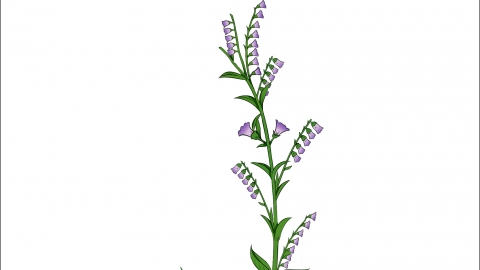Is Sedum sarmentosum the same as Scutellaria barbata?
Generally speaking, Sedum sarmentosum (垂盆草) is not Scutellaria barbata (半枝莲). The use of traditional Chinese medicine should follow medical advice. A detailed analysis is as follows:

In terms of botanical classification, Sedum sarmentosum belongs to the genus Sedum of the Crassulaceae family, while Scutellaria barbata belongs to the genus Scutellaria of the Lamiaceae family. Regarding morphological characteristics, Sedum sarmentosum has thin, prostrate stems, with leaves that are oblong or倒披针形 (oblanceolate to oblong), whorled and fleshy thick; Scutellaria barbata, on the other hand, has erect, quadrangular stems, with triangular-ovate or ovate-lanceolate leaves that are opposite and relatively thin. Concerning growth habits, Sedum sarmentosum typically grows in shady and moist environments such as rock crevices on slopes and ditch sides, whereas Scutellaria barbata is commonly found at field edges, stream banks, or moist grasslands, showing strong environmental adaptability. Regarding medicinal value, Sedum sarmentosum mainly functions to clear heat, promote diuresis, resolve dampness, detoxify, and reduce swelling, and is commonly used for conditions such as jaundice and edema. Scutellaria barbata focuses more on clearing heat and detoxifying, dispersing blood stasis to stop bleeding, promoting diuresis, and reducing swelling, and is frequently used in treating abscesses, poisonous swellings, insect or snake bites, and similar conditions. Therefore, Sedum sarmentosum and Scutellaria barbata differ in botanical properties, appearance, growing environments, and medicinal effects, making them two distinctly different plants.
To avoid ineffectiveness or health risks due to misuse, it is recommended to use traditional Chinese medicine under the guidance of a qualified TCM practitioner and ensure the reliability of herb sources. Additionally, maintain a light diet and avoid spicy or irritating foods to facilitate recovery.







